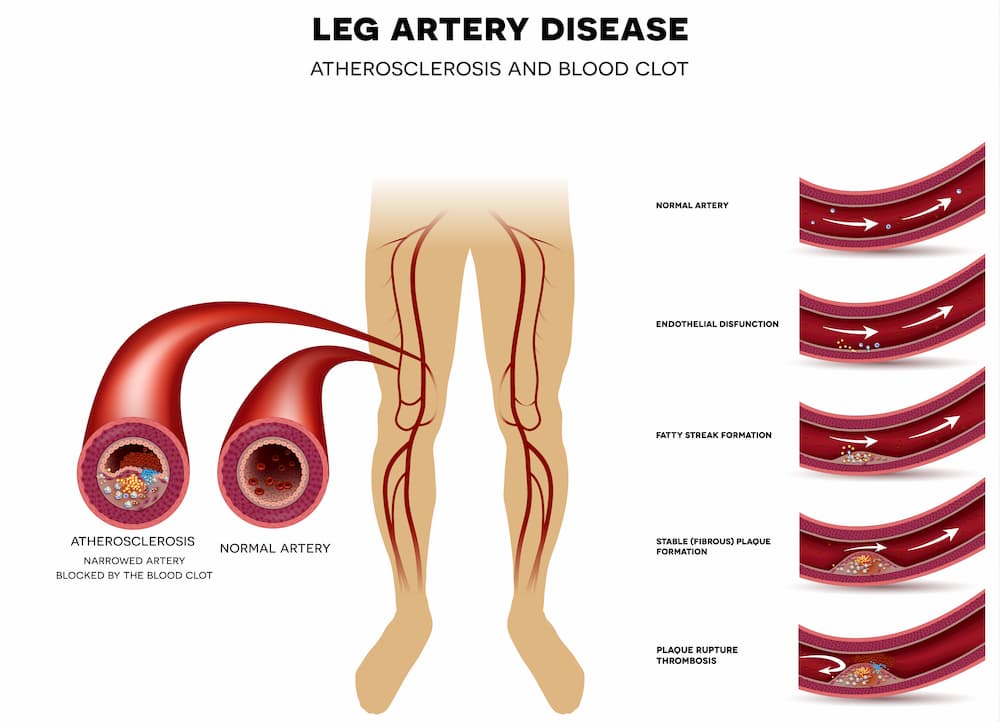PERIPHERAL ARTERIAL DISEASE

Peripheral arterial disease (PAD) results from the deposition of cholesterol and calcium in the arteries supplying blood to the legs and sometimes the hands. Blockages of these arteries to the limbs leads to a progressive loss of blood flow with symptoms of calf pain, decreased walking distances and in severe cases amputation of the limb. The growing epidemic of diabetes in the world and in Singapore (where it is estimated to affect over 11% of people) means that PAD and amputations of toes and limbs from it are also rising.
We offer simple screening tests like ABI (ankle brachial index) and TBI (toe brachial index) to detect disease early, advanced arterial hemodynamic (blood flow) tests like segmental pressure measurement and exercise ABI and TBI, diagnostic ultrasound Duplex scans, as well as the full range of peripheral arterial angioplasty, stenting and limb bypass surgery to re-establish blood flow and prevent amputations. This is complemented by our expert cardiology physicians who manage the risk of heart disease and stroke associated with the condition.
If you have had previous coronary heart disease, are a smoker or suffer from diabetes or leg cramps after walking short distances, or you would like a vascular health or diabetic foot screen, contact us or visit the relevant pages of this website for more information.
- Peripheral angioplasty and stenting Peripheral angioplasty is an endovascular (keyhole) procedure performed usually under a local anesthetic in which a wire is passed across the blockage in the artery through a small plastic tube inserted in the groin. A balloon is then passed over this wire and opened at the site of the blockage to re-establish blood flow to the limb beyond the blockage. Sometimes the blockages are extremely hard (due to calcium) to keep open with just a balloon angioplasty and a fine metal tube called a stent may need to be inserted across the blockage to keep the artery open.
- Peripheral arterial bypass surgery In severe disease of the arteries, blockages may be too extensive in length or too many in number to be treated by a balloon angioplasty. In such cases, blood flow may have to be re-established by an operation called a bypass where the blockages are crossed using a tube from above the blockage to below it. The tube is usually the patient’s own leg vein, though sometimes a special artificial tube called a graft may be necessary if the patient’s own vein is not suitable.
- Low intensity ultrasonic extra-corporeal shock wave therapy (ESWT) This outpatient procedure is used for patients who are either detected early to have decreased blood flow to the feet and wish to avoid surgery in the future or are too old or frail to undergo major arterial surgery. It involves the application of non-invasive ultrasonic shock waves (a painless out-patient procedure) to the feet and legs. With age, blood vessels in all parts of the body deteriorate. ESWT stimulates the body to repair old vessels and generate the growth of new blood vessels from pre-existing ones, a process called angiogenesis. Sessions last 20-30 minutes and multiple sessions may be required.
